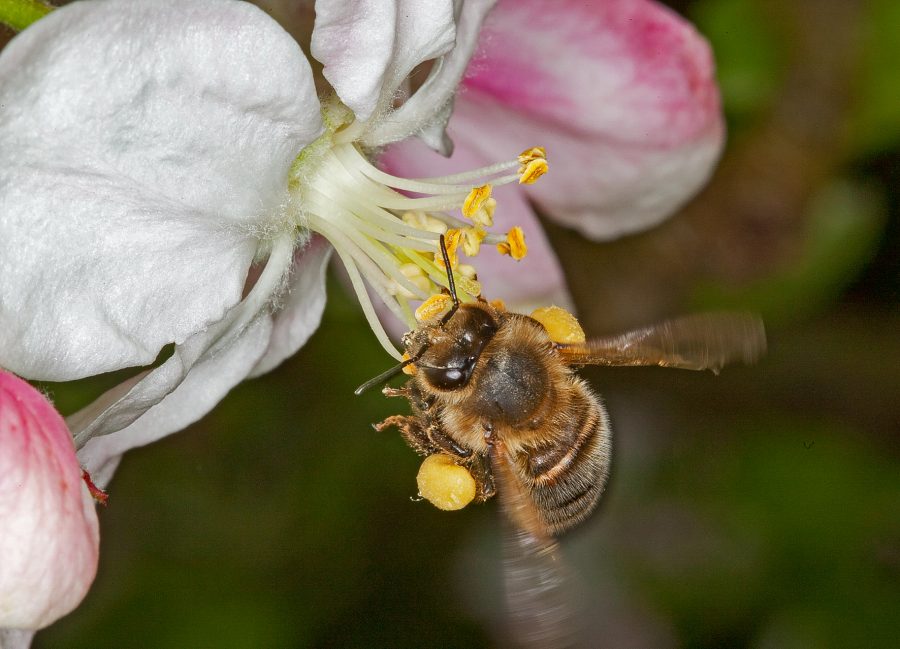Claire Waring looks at how to help our bees survive the winter and prepare for the season ahead.
In January, we looked at various problems that our bees may face in winter and in February we must remain vigilant. We like pretty snowy pictures on our Christmas cards but we need to be aware that our bees are still at risk in February and March. Spring can be very cold and damp with few days when bees can leave the hive, and not much available forage when they do. As day length increases, the queen starts laying more eggs so that there will be a large number of foraging bees available a couple of months later to take advantage of the spring forage.
An adult worker bee takes 21 days to develop from an egg and then she performs duties within the hive for another couple of weeks, so it will be several weeks before the insect hatching from an egg laid in February will be helping to collect food for the colony. More eggs means more larvae and more mouths to feed. Nurse bees will be kept busy producing brood food and that requires consumption of both protein (pollen) and carbohydrate (honey/sugar). The demand on stores goes up and this is the critical point where your winter feeding will prove successful, or it will fail and your bees will perish unless you undertake some form of emergency feeding. Bees properly fed in the autumn will rarely need feeding in spring.
POLLEN DEMAND
The increasing food demands from the growing numbers of worker larvae mean there is a high demand for pollen and when the weather is suitable, you should see your bees flying from the hive and returning with large pollen loads in the pollen baskets (or corbiculae) on their hind legs. I think this is one of the most encouraging signs of spring in the apiary.
This is an area where you can help your bees by planting suitable flowers and shrubs in your garden. Particularly valuable are the spring-flowering plants and also those that produce pollen at the end of the year when colonies also need a high pollen intake to store for winter. The useful spring flowers include crocus, snowdrop, winter aconite and, probably the most helpful of all, the pussy willow (Salix caprea). For the small garden, this is available as the weeping pussy willow or the Kilmarnock willow which is very attractive and doesn’t take up a lot of space.
Trees and shrubs are in fact very valuable as nectar and pollen sources as they provide a large amount of forage in what, for the gardener, is a very little space. Imagine spreading out something like a mature lime tree flat on the ground and think of the area it would cover! That is the equivalent area of forage available for your bees. However, there are a couple of points to note. The first is that for your flowers to be really useful to your bees, they need to be single varieties. The double varieties developed by the plantsmen are very attractive to us but not the bees who can’t find their way inside to the nectaries. The second point is that if you want to provide pollen for your bees, where the species has male and female plants, such as the willow, make sure you buy a male specimen.
This article extract was taken from the February 2024 edition of The Country Smallholder. To read the article in full, and learn more from Claire about helping bees prepare for the season ahead, you can buy the issue here.
To receive regular copies of The Country Smallholder magazine featuring more articles like this, subscribe here.
For FREE updates from the world of smallholding, sign up for The Country Smallholder newsletter here.








